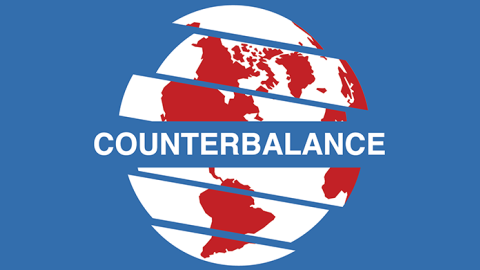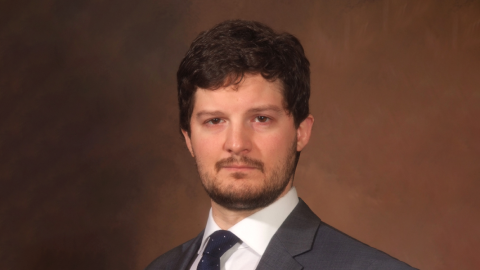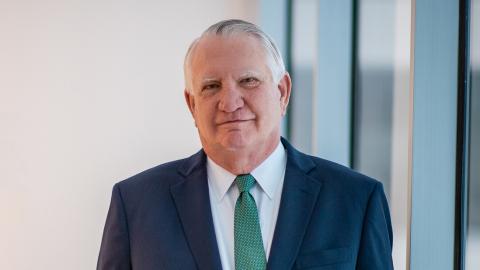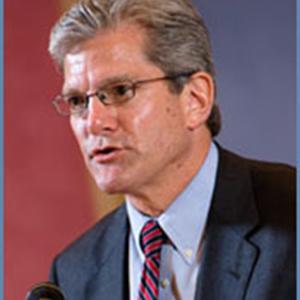SUMMARY: __William Schambra's first piece with the Bradley Center cautioned small foundations to think twice before taking the advice of philanthropic experts who insist upon the necessity of collaboration for effective grantmaking. As the number of foundations and ways to give explode, large foundations promote collaboration to suppress or constrain promising new modes of giving to convince small, new foundations of larger foundations professional authority and leverage smaller foundation dollars toward their own tested ends. Giving should reflect, first and foremost, a donors deepest personal and moral convictions, not some pseudo-scientific orthodoxy prescribed by the self-appointed guardians of institutional philanthropy, Schambra wrote. The full text of this article, which appeared in the March/April 2003 issue of Philanthropy magazine, can be found below.__
In a field that sprouts buzzwords like mushrooms after a hard rain, for contemporary philanthropy the term “collaboration” may be the Destroying Angel, the biggest, baddest toadstool around. Non-profit libraries bulge with books sporting titles like Collaboration: What Makes It Work, Community-based Collaboratives, Real Collaboration, and Beyond Collaboration. Psychological profiles of nonprofit executives most likely to be good collaborators have been prepared: “extrovert, feeling males who have high role ambiguity and low boundary occupational stress.” The Council on Foundations’ annual meeting is devoted to the topic “Working Together for the Common Good-What Have We Learned about Collaboration?”
Now, no one wishes to be in the position of arguing against Working Together for the Common Good. And of course, cooperation and coordination can be salutary wherever foundations find their purposes, techniques, or clientele bringing them into close proximity. Nonetheless, there is something slightly manic about today’s collaborative craze, and it is worth looking at it more closely before surrendering to the impulse.
Medium and large foundations with strong national public policy agendas have been particularly active collaborators because, as one advisor puts it, collaboration is a way of “investing private capital to devise comprehensive strategies which seek to create change at a systemic level.” One of the first substantial collaborative efforts was the formation of the Environmental Grantmakers Association in 1987, designed to “promote recognition that the environment and its inhabitants are endangered by unsustainable human activities.” Since then, many others have arisen, including the Ms. Foundation’s Collaborative Fund for Women’s Economic Development, the International Human Rights Funders Group, Funders’ Network for Smart Growth and Livable Communities, and the National Lesbian and Gay Community Funding Partnership. Some are little more than loosely organized discussion groups, while others have standing secretariats to conduct research, recommend grants, draft policy papers, and lobby. From their names and websites, one soon realizes that most of this collaborative energy is generated by persons with a left-of-center ideological bent.
Most small- to medium-sized foundations with locally oriented agendas, however, encounter collaboration more subtly, and without the obvious ideological warning labels. It usually happens this way: an invitation arrives for a lunch at the City Club featuring a presentation by a major national philanthropy. The invitation hints of the possibility of an exciting new collaborative venture. (Accepting the invitation seems harmless, but realize that news reports will say the city’s “enthusiastic support for the new collaboration is seen in the attached list of civic leaders who attended the announcement lunch.”) During the dessert course, an official from the national foundation will give a talk on a prized program that has “significantly impacted” unwed mothers or disadvantaged youth or neighborhoods in transition. Then comes the grand unveiling of the major new six-city, five-year replication initiative. The good news is that the national foundation will provide half the funds. The even better news: The local foundations in the room have an exciting opportunity to “partner” with this prestigious foundation by providing the other half, should this city be lucky enough to be selected as an expansion site.
Before signing on the dotted line, however, the local foundation should be alert for some common problems with donor collaborations. First, national foundations are eager to draw other donors into collaborations because it lets them claim they are “leveraging resources” with their grants-another favorite foundation buzz word today, and a sure-fire entry on any program officer’s résumé. Of course, the local sponsors of the collaborative will also claim they have successfully “leveraged” the national foundation’s money, as well as their local partners’, so that the total dollars “leveraged” will be many multiples of the actual dollars contributed.
Many large national foundations launch replication efforts well before there is any genuine evidence the original program actually had any impact. Carefully designed impact studies require years to demonstrate any lasting effects, but to paraphrase Woody Allen, foundation programs are like sharks: they have to keep moving, or they die. Officers at large foundations are under fierce pressure to replicate programs or “take them to scale” as quickly as possible, because that’s a measure of professional success. They are unlikely to wait around for all the data to be collected and thoroughly analyzed. Yet if you lack evidence of a program’s effectiveness, collaborating to expand it risks throwing good money after bad.
Even before the collaborative’s gilt-lettered name appears on the glass in that Neo-classical Revival at the edge of the targeted neighborhood in your town, it will be evident this collaborative is a very expensive way to tackle the problem. The spending for nationally known expert consultants, organization specialists, communications personnel, training and technical assistance providers, and evaluation designers-all of whom will have to be flown to town regularly, put up, and wined and dined in the manner to which they have become accustomed-will be considerable. Because this is a showcase replication of a major initiative, the primary national funder will want to ensure that as little as possible is left to chance and that only well-paid professionals are allowed anywhere near the important moving parts. While the dollars spent in your city may be little more than a rounding error for the national funder, for the “replication site” it means that major chunks of local philanthropic dollars will be tied up for years-unavailable for emerging needs, urgent problems, or small, innovative, indigenous efforts that have developed less expensive and more effective programs truly appropriate to the community.
Indeed, to the extent that a funding collaborative has much success, it will usually be due to some plucky neighborhood leaders who seize hold of the process and so strenuously “adapt” it that it comes to bear almost no resemblance to the original program. At that point, the local funding partners might reasonably ask themselves why they didn’t simply fund those local leaders in the first place, and spare the fuss and expense of the now-meddlesome national philanthropic guest.
Of all the pitfalls of promiscuous collaboration, the worst is the tendency to slide into mindless groupthink and painfully conventional mediocrity. Collaboration “consumes considerable time, energy, and resources,” notes Lauren LeRoy of Grantmakers in Health. While there are usually only a handful of truly committed and substantial partners, the appearance of collaboration is preserved by having consensus govern decisions on direction, personnel, and projects. This is not only cumbersome and slow, it also ensures that the collaborative will steer clear of new, daring, cutting-edge projects and stick with those that are safe, unimaginative, and politically wired to the most vocal funding partners. As collaboration skeptic Bruce Glasrud puts it, “work products based on consensus are rarely visionary or revolutionary.”
Pioneers Lead, Crowds Follow
From my 11 years at the Bradley Foundation in Milwaukee, I can attest that the most important and effective initiatives we undertook would never have happened had we surrendered to the siren call of collaboration, settling for the safe, comfortable, lowest-common-denominator grantmaking it produces. Refusing to follow the crowd, however, requires courage: declining to join other local funders in the latest replication coalition inevitably means stepping on some toes and offending unwritten codes about “community obligation.” It means forgetting about that Donor of the Year award from the local grant-making consortium.
On the other hand, forging ahead on our own-unperturbed by the indifference and even hostility of other national foundations-bequeathed to Wisconsin a welfare system that has been copied throughout the land, and to Milwaukee an education system based on full parental choice. The virtue of American philanthropy in theory is that it permits this sort of bold innovation. The vice of American philanthropy as practiced today is that it does everything it can to discourage unconventional, entrepreneurial giving. As Harvard foundation scholar Peter Frumkin puts it, “Too many small and emerging foundations simply cling to the programs and agendas of the large activist foundations, rather than developing their own philanthropic priorities and seeking to operate as local fonts of innovation and initiative.
Why, then, is collaboration so popular with the major foundations? Perhaps because it is one way to cope with a future that is, for them, uncertain and disturbing. For most of the twentieth century, a handful of blue-chip foundations established the rules of the philanthropic road. From the moment in 1891 when John D. Rockefeller Sr. wearily surrendered his giving to Frederick Gates, it was a standard maxim that mere money-makers should humbly turn over money-giving to the credentialed professionals. Hence the world of institutional philanthropy has seen ever growing and ever more academically oriented foundation staffs, backed by professional associations and foundation membership organizations that move new donors quickly into the hands of the “experts.”
But as Les Lenkowsky notes in his provocative contribution to the Brookings Institution’s State of Nonprofit America, institutional philanthropy today gazes about itself in dismay at a world of giving that no longer follows the paths marked out by the Rockefellers, Fords, and Carnegies. While it was once understood that organized giving should be left to the truly wealthy-those with enough money to lure that promising young senior program officer from Rockefeller to run the new foundation-today individuals of modest wealth are establishing foundations as if anyone could do it. The Foundation Center counts over 56,000 foundations of all types in the United States. Ellen Remmer of the Philanthropic Initiative estimates that private foundations were launched at the brisk pace of 1,000 per year during the 1990s and now total more than 40,000; two-thirds are family-managed, and three-quarters hold under $1 million in assets.
The Chronicle of Philanthropy notes that Douglas Mellinger of Foundation Source is promoting foundation start-ups to “donors with as little as $100,000 to give away in the hopes of reaching a mass market” of thousands more donors. Then there is the movement toward donor-advised funds-some independent, like DonorsTrust, some attached to financial services corporations or community foundations-which also offer quite modest donors the opportunity to make their own charitable choices. The nation’s largest donor-advised fund, Fidelity’s Charitable Gift Fund, has over 30,000 donors who have given away $3 billion in grants since 1992.
Although the largest foundations still control the bulk of the foundation world’s roughly half-trillion dollars in assets-the wealthiest 1.7 percent of foundations ($50+ million in assets) accounted for 70 percent of total assets in 1999-the trends toward philanthropic populism are tripping alarms in their marble hallways. Hence the complaint by Council on Foundations president Dorothy Ridings, quoted in the New York Times (January 12, 2003): “There are a number of foundations that we believe are inefficient, lack the stewardship a foundation should have and, frankly, shouldn’t exist.”
So how does institutional philanthropy steer this increasingly unruly mob back to conventional philanthropy? “Donor education” is the field’s euphemism for the process. Reporting for the Chronicle of Philanthropy in June 2002, Stephen Greene observed that the larger foundations now see that “traditional ways of grooming grantmakers are insufficient, given the large influx of donors and foundations with little or no experience in philanthropy.” Thus the Ford Foundation is now making available to all new donors the materials it once used only internally to train its own program officers. And the Rockefellers have launched Rockefeller Philanthropy Advisors, noting that “our family has more than 100 years of experience and expertise in effective giving over six successive generations, and we wanted to share what we’ve learned with the growing ranks of families seeking to make an impact.”
Promoting collaboration, however, is surely one of the more potent and sophisticated ways to herd the cats of new philanthropy. When that major national foundation shows up in your town proclaiming an interest in collaboration, it hardly has in mind a partnership of equals. It intends to bring under its wing benighted local philanthropists-many of whom are precisely the unruly new donors who still think for themselves-for a serious tutorial in large-scale, systematic, “scientific” giving.
New givers at small foundations or donor-advised funds should not let themselves be intimidated by philanthropic experts who insist that only major collaborative efforts can make a difference. Giving should reflect, first and foremost, a donor’s deepest personal and moral convictions, not some pseudo-scientific orthodoxy prescribed by the self-appointed guardians of institutional philanthropy. Besides, there are innumerable small, effective, grassroots groups in our own backyards for whom the smaller grants of the new donors would be great blessings. Finally, no one should forget that some of the most significant philanthropic initiatives of the past 20 years-broadening school choice foremost among them-would never have happened had the lead foundations worried about establishing large collaboratives first. Innovative foundations simply plunged ahead with their own resources, with no help from most major foundations. Only as positive changes started to appear did a few other funders begin to “collaborate.”
Like most philanthropy buzzwords, “collaboration” sounds unobjectionable. When it means foundations with common purposes should bring some coordination to their efforts, it is reasonable and benign. But when it tends to suppress or constrain promising new modes of giving in America, it unwittingly serves a philanthropic establishment that seeks desperately to re-establish its professional authority in a world that is, to them, frighteningly recalcitrant and disordered. That is why I give collaboration only one cheer. But then, maybe I suffer from low role ambiguity or high boundary occupational stress.















